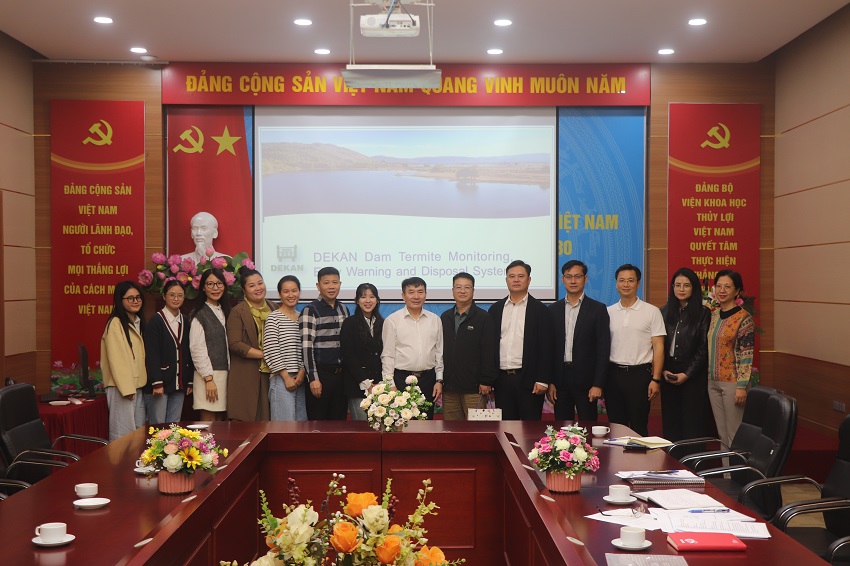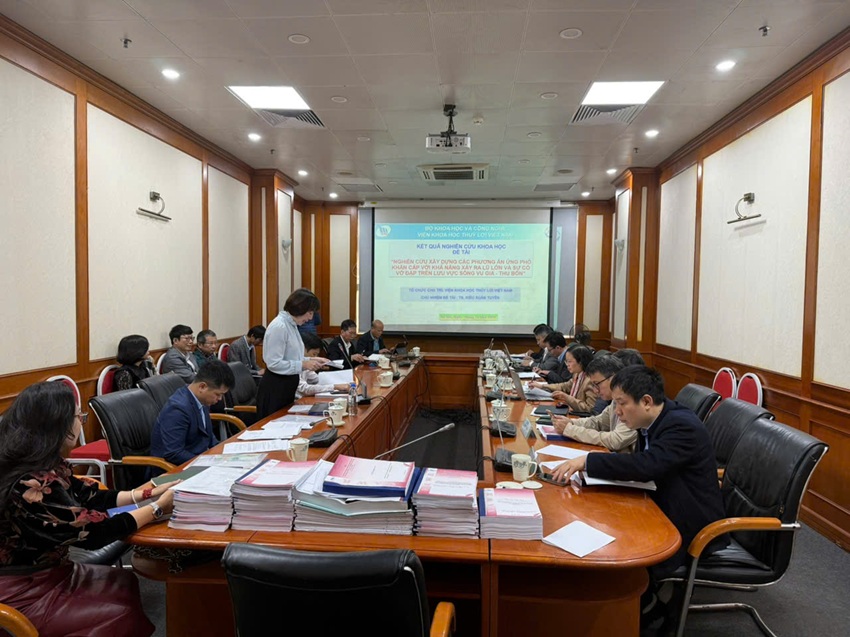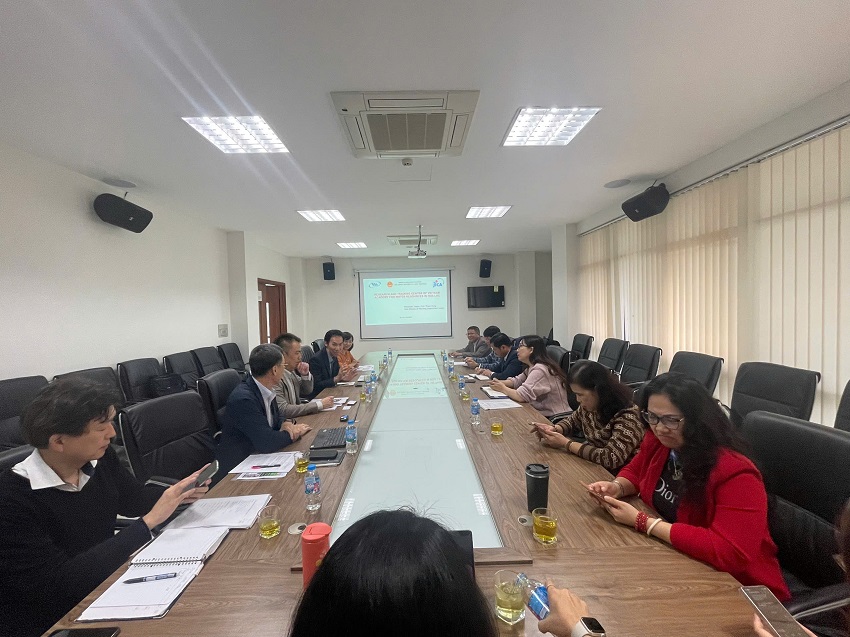Monsoon wave transmission at bamboo fences protecting mangroves in the lower mekong delta
28/08/2021This paper is concerned with a study on monsoon wave transmission at bamboo fences protecting newly-planted mangroves in the Lower Mekong Delta (LMD) of Vietnam. For this, new field experiments were carried out in combination with the use of an existing field dataset by Albers et al. (2013).
In support of the analysis of the field data, influences of governing parameters on wave transmission are systematically examined using a numerical wave tank (i.e. a RANS-VOF model). It follows that the fence height is relatively more influential than the fence width. Also, high-frequency waves are generally more effectively dissipated by the fences than long-frequency waves. Importantly, the fence porosity is found to affect attenuation of both high- and low-frequency waves drastically, indicating its important role in the quantitative understanding of wave transmission as well as in the fence functional design.
An empirical formulation of wave transmission at bamboo fences, needed for the fence functional design, was eventually derived from all the field data. As hinted at by the numerical analysis, the fence freeboard, the fence width and especially the fence porosity are found the major governing parameters.
1. Introduction
2. Field experiments and used datasets
2.1. Wave transmission coefficient
2.2. New experiments
2.3. Existing GIZ dataset
2.4. Combination of datasets
3. Numerical analysis
3.1. Model description
3.2. Model setup and validations
3.3. Wave-fence interaction
3.4. Influences of fence parameters
4. Empirical formulation
5. Discussion
6. Summary and concluding remarks
References
[1] T. Balke, E.L. Webb, E. Denelzen, D. Galli, P.M.J. Herman, T.J. Bouma, C. Frid, Seedling establishment in a dynamic sedimentary environment: a conceptual framework using mangroves, Journal Applied Ecology 50 (2013) 740–747.
[2] J.C. Winterwerp, P.L.A. Erftemeijer, N. Suryadiputra, P. van Eijk, L. Zhang, Defining Eco-Morphodynamic Requirements for Rehabilitating Eroding Mangrove-Mud Coasts, Wetlands 33 (3) (2013) 515–526.
[3] S. Mai, N. Von Lieberman, C. Zimmermann, Interaction of Foreland Structures with Waves, In Proc. 28th IAHR Congress, Graz, 1999, p. 7.
[4] K. d'Angremond, J.W. van der Meer, R.T. De Jong, Wave transmission at lowcrested structures, In Proc. 25th Int. Conf. Coastal Eng, 1996, pp. 2418–2426.
[5] T. Albers, D.C. San, K. Schmitt, Shoreline Management Guidelines: coastal Protection in the Lower Mekong Delta, Project Report GIZ Soc Trang Coastal Zone Management, 2013, p. 124.
[6] Albers, T. and Von Lieberman, N., 2011. Current and Erosion Modelling Survey. Project report Management of Natural Resources in the Coastal Zone of Soc Trang Province, Deutsche Gesellschaft für Internationale Zusammenarbeit (GIZ) GmbH, 61pp.
[7] V.C. Cuong, S. Brown, H.H. To, M. Hockings, Using melaleuca fences as soft coastal engineering for mangrove restoration in Kien Giang, Vietnam, Ecol Eng 81 (2015) 256–265.
[8] T. Suzuki, Doctoral dissertation, Delft University of Technology, 2011, p. 175.
[9] K.L. Phan, J.S.M. van Thiel de Vries, M.J.F. Stive, Coastal mangrove squeeze in the Mekong Delta, Journal of Coastal Research 31 (2) (2015) 233–243.
[10] H. Halide, R. Brinkman, P. Ridd, Designing bamboo wave attenuators for mangrove plantations, Indian J Mar Sci 33 (3) (2004) 220–225.
[11] T. Dao, M.J.F. Stive, B. Hofland, C.T. Mai, Wave damping due to wooden fences along mangrove coasts, Journal of Coastal Research 34 (6) (2018) 1317–1327.
[12] M. Zijlema, G. Stelling, P. Smit, SWASH: an operational public domain code for simulating wave fields and rapidly varied flows in coastal waters, Coastal Engineering 58 (10) (2011) 992–1012.
[13] K. Schmitt, T. Albers, T.T. Pham, S.C. Dinh, Site-specific and integrated adaptation to climate change in the coastal mangrove zone of Soc Trang Province, Viet Nam, Journal of Coastal Conservation 17 (3) (2013) 545–558.
[14] Tucker, M.J. and Pitt, E.G., 2001. Waves in Ocean Engineering, Elsevier, Oxford.
[15] RBR, Ruskin user guide for RBR loggers. https://rbr-global.com, 2015 (accessed on March 2019).
[16] A. Sheremet, R.T. Guza, S. Elgar, T.H.C. Herbers, Observations of nearshore infragravity waves: seaward and shoreward propagating components, J. Geophys. Res.107 (C8) (2002) 3095.
[17] I.J. Losada, J.L. Lara, R. Guanche, J.M. Gonzalez-Ondina, Numerical analysis of wave overtopping of rubble mound breakwaters, Coastal Engineering 55 (2008) 47–62.
[18] J.L. Lara, I.J. Losada, M. Maza, R. Guanche, Breaking solitary wave evolution over a porous underwater step, Coastal Engineering 58 (9) (2011) 837–850.
[19] A. Torres-Freyermuth, I.J. Losada, J.L. Lara, Modelling of surf zone processes on a natural beach using Reynolds-Averaged Navier–Stokes equations, J. Geophys. Res.112 (2007) C09014.
[20] T.Q. Tuan, N.V. Thin, Numerical study of wave overtopping on sea-dikes with crown-walls, Journal of Hydro-environment Research 8 (4) (2014) 367–382.
[21] J.L. Lara, I.J. Losada, R. Guanche, Wave interaction with low-mound breakwaters using a RANS model, Ocean Engineering 35 (13) (2008) 1388–1400.
[22] R. Guanche, A. Iturrioz, I.J. Losada, Hybrid modelling of pore pressure damping in rubble mound breakwaters, Coastal Engineering 99 (2015) 82–95.
[23] A. Torres-Freyermuth, J.L. Lara, I.J. Losada, Numerical modelling of short-and longwave transformation on a barred beach, Coastal Engineering 57 (2010) 317–330.
[24] A. Pomeroy, R. Lowe, G. Symonds, A.V. Dongeren, C. Moore, The dynamics of infragravity wave transformation over a fringing reef, J. Geophys. Res. 117 (2012) C11022.
[25] K.L. Phan, M.J.F. Stive, M. Zijlema, H.S. Truong, S. Aarninkhof, The effects of wave non-linearity on wave attenuation by vegetation, Coastal Engineering 147 (2019) 63–74.
[26] N.A. Tien, T.Q. Tuan, Wave Damping Efficiency of Porous Piled Dikes on a Mangrove Foreshore, In Proc. Int. Conf. Asian and Pacific Coasts, 2019, pp.863–868 https://doi.org/10.1007/978-981-15-0291-0_118.
[27] M.R.A. Van Gent, Doctoral dissertation, Delft University of Technology, 1995, p. 175.
[28] T.J. Hsu, T. Sakakiyama, P.L.F. Liu, A numerical model for wave motions and turbulence flows in front of a composite breakwater, Coastal Engineering 46 (2002) 25–50.
[29] J.L. Lara, N. Garcia, I.J. Losada, RANS modelling applied to random wave interaction with submerged permeable structures, Coastal Engineering 53 (5–6) (2006) 395–417.
[30] Y. Yao, Z.H. Huang, S.G. Monismith, E.Y.M. Lo, Characteristics of monochromatic waves breaking over fringing reefs, Journal of Coastal Research 29 (2013) 94–104.
[31] I.A. Svendsen, Introduction to Near-Shore Hydrodynamics, World Scientific, Singapore, 2006, p. 722.
[32] J.A. Battjes, H.J. Bakkenes, T.T. Janssen, A.R. van Dongeren, Shoaling of subharmonic gravity waves, Journal of Geophysical Research-Oceans 109 (C2) (2004).
[33] T.E. Baldock, Dissipation of incident forced long waves in the surf zone-Implications for the concept of “bound” wave release at short wave breaking, Coastal Engineering 60 (2012) 276–285 https://doi.org/10.1016/j.coastaleng.2011.11.002.
[34] E. Horstman, M. Dohmen-Janssen, P. Narra, N.J. van den Berg, M. Siemerink, T. Balke, T. Bouma, S. Hulscher, Wave attenuation in mangrove forests: field data obtained in Trang, Thailand, In Proc. 33nd Int. Conf. Coastal Eng. 2012 https://doi.org/10.9753/icce.v33.waves.40.
[35] S.R. Massel, K. Furukawa, R.M. Brinkman, Surface wave propagation in mangrove forests, Fluid Dynamic Research 24 (4) (1999) 219–249.
[36] Patrick, M., San, D.Q., 2016. Erosion processes in the Lower Mekong Delta coastal zones and measures for protecting Go-Cong and Phu-Tan. Final report, AFD-SIWRR project, 85.
[37] J.W. Van der Meer, R. Briganti, B. Zanuttigh, B. Wang, Wave transmission and reflection at low-crested structures: design formulae, oblique wave attack and spectral change, Coastal Engineering 52 (2005) 915–929.
[38] K.C. Sollitt, H.R. Cross, Wave Transmission through Permeable Breakwaters, Proc.13rd Int. Conf. Coastal Eng. 1972, pp. 1827–1846.
[39] P.L.F. Liu, P.Z. Lin, K.A. Chang, T. Sakakiyama, Numerical modelling of wave interaction with porous structures, Journal of Waterway, Port, Coastal, and Ocean Engineering 125 (6) (1999) 322–330.
[40] W. McDougal, State of the art practice in coastal engineering, Lecture Notes, National Cheng Kung University, Taiwan, 1993 10.25-10.28.
See detail: Monsoon wave transmission at bamboo fences protecting mangroves in the lower mekong delta
Tuan Thieu Quanga,⁎, Luan Mai Trongb
a Thuyloi University, 175 Tay Son, Dong Da, Hanoi, Vietnam
b Institute of Ecology and Works Protection, Vietnam Academy for Water Resources, Hanoi, Vietnam
Applied Ocean Research
Ý kiến góp ý:









